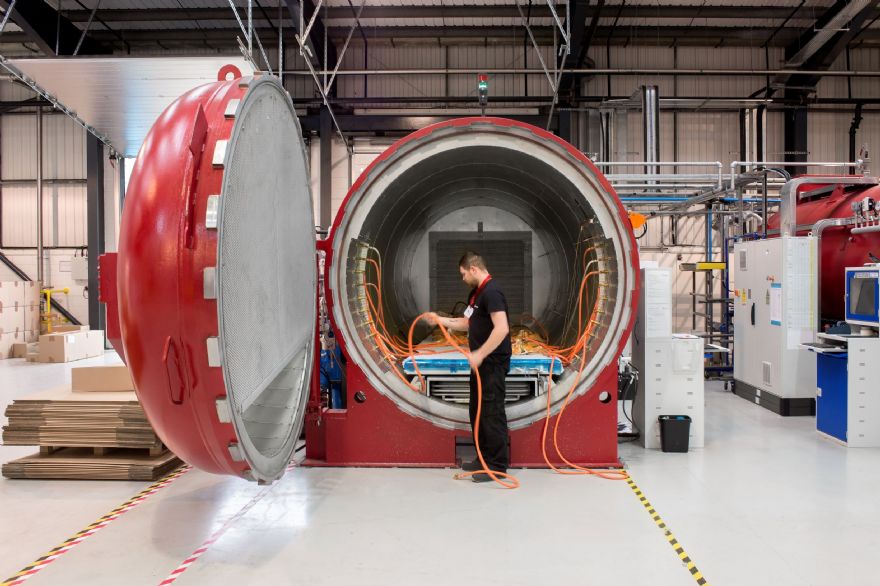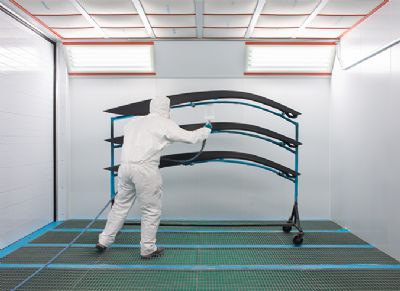
Firmly established in the aerospace and automotive industries, the principles of lightweighting open up big opportunities for the manufacturing sector at large. For engineers and designers looking to reduce their carbon footprint and boost the bottom line, those opportunities are just waiting to be grasped.
Hampshire-based Formaplex sales director Matt Sellens said: “Lightweighting is something we get asked about a lot. It is not a new trend but rather an evolution driven by the combination of advanced materials and processes with the drive for economy and reduction in CO
2 emissions.
“Put simply, the principle is that if you need additional speed and efficiency, add lightness. Proof that it works is firmly established in the aerospace and automotive industries with whom we’ve been solutions providers for almost two decades.”
A McKinsey report,
Lightweight, heavy impact, looking at how carbon fibre and other lightweight materials will develop across industries, forecasts significant growth. While the lightweight materials share is currently highest in aviation with almost 80%, automotive is predicted to massively increase its share from 30 to 70% by 2030.

Carbon fibre offers huge design scope. Its cost gap to aluminium is also on track to shrink significantly over the next two decades, with forecasts based on the automotive sector making carbon fibre parts much closer in cost terms to comparable aluminium parts.
The McKinsey report backs this up, predicting that the industrialisation of carbon fibre means that costs have the potential to decrease by 70%, benefitting manufacturing in its broadest sense. This all points to a continued move towards the increased use of carbon fibre as part of the drive towards greater efficiency and lower carbon emissions. The opportunities and benefits are ready and waiting for designers and engineers across all the sectors who are open to the next generation of possibilities.
Lightweighting – some surprising opportunitiesMr Sellens continued: “We are seeing particular scope in the oil, gas, medical, space, defence and renewables sectors, where the leading players are recognising that the lightweighting revolution leads to a circle of improvements. It is based on the simple premise that any part of any product that moves will reap the benefits of lightweighting in sometimes less than obvious areas.
“For example, we worked on a customer project requiring a solution for outboard motors used on a rigid inflatable craft. The core challenge stemmed from a health and safety perspective and the need for a lighter outboard motor that could be safely and more rapidly lifted on and off the craft by two people. By using high strength forged carbon fibre to replace the traditional aluminium, we were able to meet the challenge and deliver a 12kg weight reduction.”
Medical lifesaversIn the medical sector, one of the major challenges is meeting the demand for aids that help overcome the ever-growing pressures of the population demographics and the impact this has on healthcare providers. Therefore the equipment needs to provide faster, more accurate and easier-to-manage ways for the care professionals to do their jobs.
In surgical robotics for example, we’ve been working with a company leading the way in equipment that’s significantly lighter than traditional alternatives. It can be easily moved around operating theatres and hospitals providing surgeons with a lighter weight robotic arm that’s easier to control and is lighter and easier to handle as smaller motors are needed. It means more operations, increased value of investment, increased accuracy and more saved lives.
Driving economy makes newsMr Sellens said: “One of our projects that attracted international headlines at the end of last year was a collaboration with the engineers of tomorrow studying at Cambridge University. We helped them create a cutting edge car weighing only 550kg by using an ultra lightweight carbon fibre chassis so it could go further and faster than would be possible using other materials.

“It has earned its place as one of the world’s most energy efficient solar cars able to travel at 50mph from London to the Scottish Highlands on the same power it takes to boil a kettle. It competed in the epic 3,000km Bridgestone World Solar Challenge race across Australia, collecting interest from the engineering community and the international media.”
The knock on effect for oil and gasSavings of millions of pounds can be achieved by embracing the lightweighting principle in the oil and gas sectors with real long term benefits. Metal pipes can become so long and heavy that they cannot support their own weight and therefore a heavy rig is needed for support. By taking weight out of the pipe using the latest composite technologies, smaller installation ships are needed with the knock-on savings running into the millions.
There’s light for the futureThe opportunities for lightweighting are everywhere and the designs of the future across all manufacturing sectors can make huge all-round improvements. While the benefits for lowering the carbon footprint are well known, for those seeking to make products that are easier and safer for people to use by being smaller and lighter, it all contributes to bigger picture savings.
For those ready to open up their imaginations to the possibilities it needn’t be intimidating. Choosing the right partner who already understands the concepts and possibilities across sectors can help to leapfrog the inevitable lightweighting learning curve, with endless opportunities ready to be grasped.